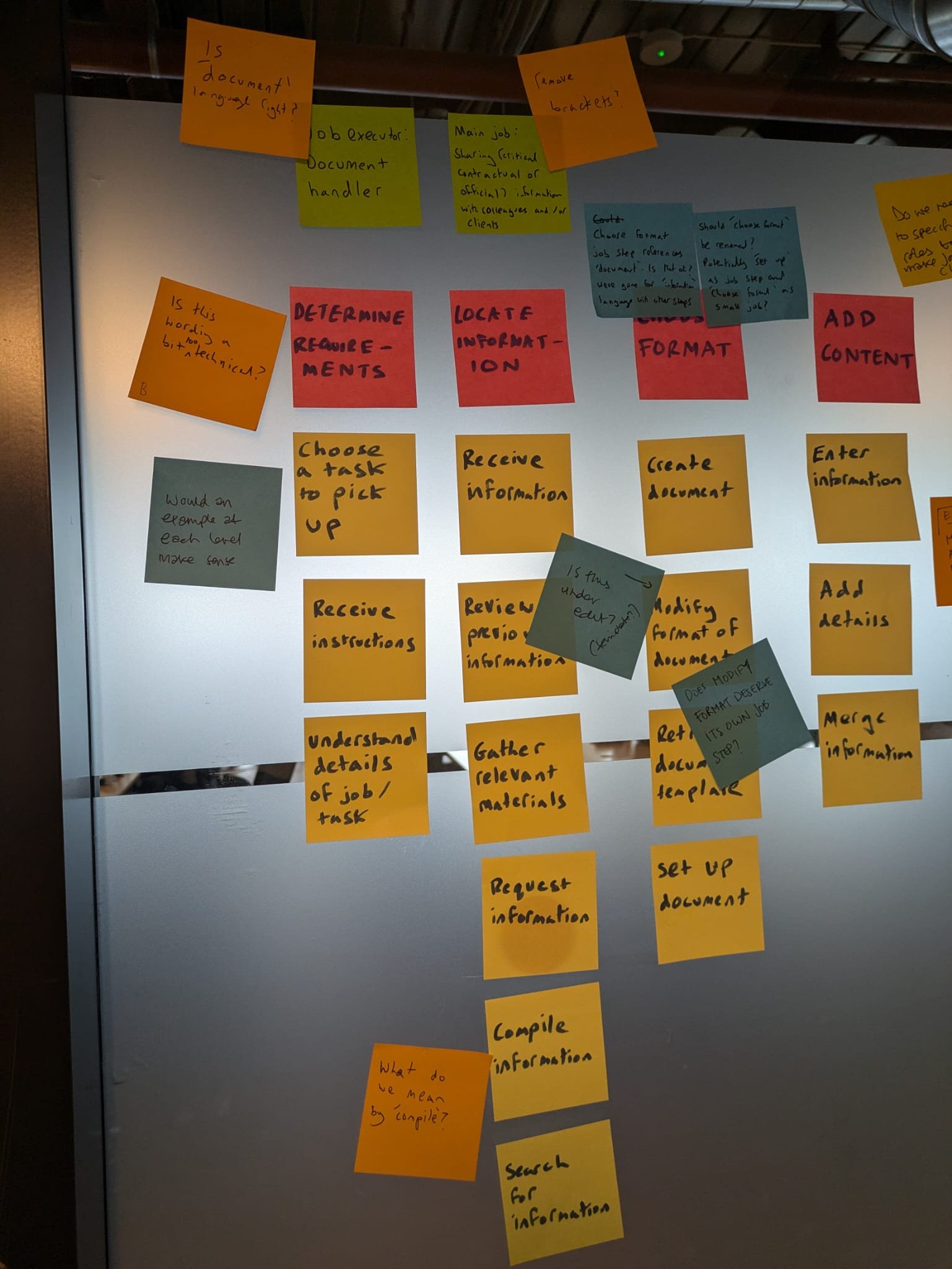Understanding Nitro customers’ core jobs with ‘Jobs to be done’
The brief
Nitro, a company offering document editing and signing tools, wanted to underpin their new product strategy with an understanding of their customers’ needs and the jobs they were carrying out when using their or similar product.
They wanted to identify these tasks, see how well Nitro was supporting them and how that compared to competitors
Methodology
We used the ‘Jobs To Be Done’ methodology. This involved interviewing 25 Nitro users and users of competitor products to understand the jobs they are carrying out.
Once we had identified these job statements, we surveyed users and users of competitor products to get a quantitative understanding of how well these jobs were being served and how well Nitro compared to it’s competitors.
Results
Nitro had a Jobs To Be Done map that helped them articulate user needs and helped them centre their product development around these jobs.
This map was used to inform the product strategy, a detailed plan articulating priorities for the upcoming year in product.
Nitro product teams were also given more exposure time to users, giving them a better understanding of their needs and behaviours.
designing ai tools for care agents supporting customers
The brief
OVO, an energy supplier with over 4 million customers, had a huge and increasing demand for call agents to support customers with their needs.
Due to increases in the cost of electricity, customers reaching out for help had increased 40% year on year, leading to increased agent work loads and poor customer satisfaction.
OVO wanted to explore how they could use artificial intelligence tools (AI) to save agents time, support more customers and improve their satisfaction.
Methodology
Ran workshops with teams to identify research questions and riskiest assumptions to explore
Organised shadowing sessions with 20 care agents, remote and in person
Highlighted key needs of agents through reports and playback sessions
Created research artifacts such as an empathy map and a ‘jobs to be done’ map
Conducted usability testing sessions to test out tool prototype with agents
The results
The team used insights to inform how the AI tool would support agents, prioritising allocating cases correctly and highlighting information most valuable to customers’ enquiries.
This led to a 20% uplift in correctly allocated customer cases, a huge win for the business and customers.
Shared knowledge of key agent pain points led to significantly influencing team’s future priorities.
A logged-in area for regular donations
The brief - Cancer Research UK have hundreds of thousands of donors who have direct debits set up to support their work. Cancer Research UK wanted to give them the ability to manage their donation online and see where their money has gone.
The team needed to understand the needs of these regular donors and create a logged in area that catered for them.
Techniques used:
Conducting user interviews
Creating personas
Facilitating sketching workshops
Creating high fidelity prototypes (using Axure)
Running usability testing sessions
A/B testing the onboarding journey (using Optimizely)
The results - A logged in area which allows donors to manage their donation and see where their money goes.
Through speaking to users and testing out the prototype with them, we were able to create an area which is easy for them to use and gives them the features they need.
An INTRANET for cancer research uk
The brief - Cancer Research UK is a charity with thousands of staff. Their intranet was not fit for purpose to support all of their needs. Content was hard to find and it was very difficult for staff to get to the information they needed.
Techniques used:
Running proto-persona worshops
Conducting user interviews
Facilitating sketching workshops
Creating low-fidelity paper prototypes
Creating high fidelity prototypes (using Axure)
Conducting card sorting exercises
Guerrilla testing
The results - After learning much more about our user’s needs and pain points, we were able to design and build an intranet that allowed staff to find all the information they needed to get on with their jobs quickly and easily.
Users were able to navigate the intranet much faster and find relevant information when they needed it.
an online shop for WEDDING FAVOURS
The brief - Cancer research UK offer a wedding favours product that allows people who are having a wedding to receive Cancer Research UK wedding favours and donate an amount of their choice to the charity. They are also able to create a personalised card.
We needed to cfeate a digital experience that allowed people to do all these things as easily as possible.
Techniques used:
User journey mapping
Running a design sprint
Data Analysis (using Google Analytics)
High fidelity prototyping (using Axure)
Guerilla testing
A/B testing to improve conversion
The results - A website which allows people to make their weddings extra-special with a donation to Cancer Research UK. Users can choose the favours they want and personalise their own cards to show their support for Cancer Research UK.









